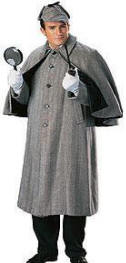Originally posted by Ben
View Post
Originally posted by Ben
View Post
By the by, if anyone has ever been to the Police Museum in Paris (Musée de le Préfecture de Police, at the Quartier Latin), it's a bit fragmentary, but spots some really interesting stuff. I was only able to do the inventaries of their archives, and I'm researching both Israel Schwartz (via the London anarchists) and Ostrog/Le Grand (in case Le Grand ever got arrested in Paris).
Originally posted by Ben
View Post




Leave a comment: